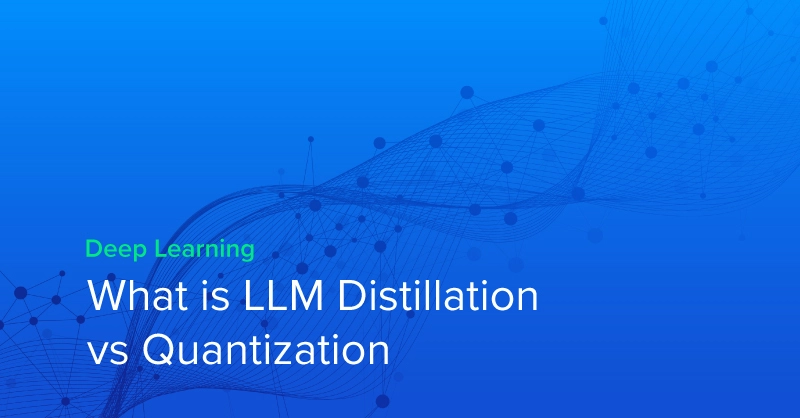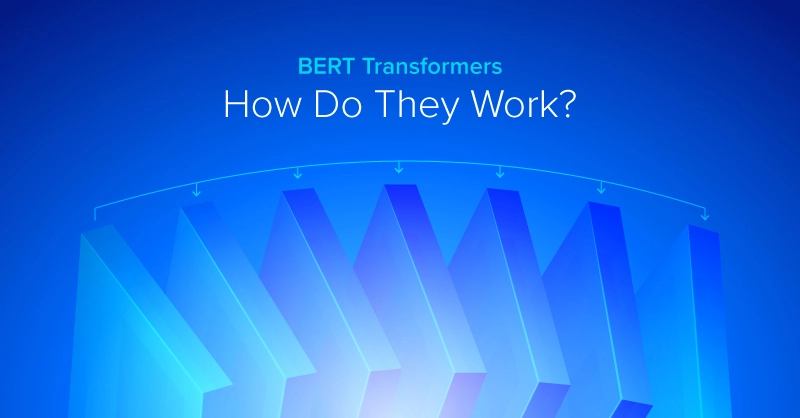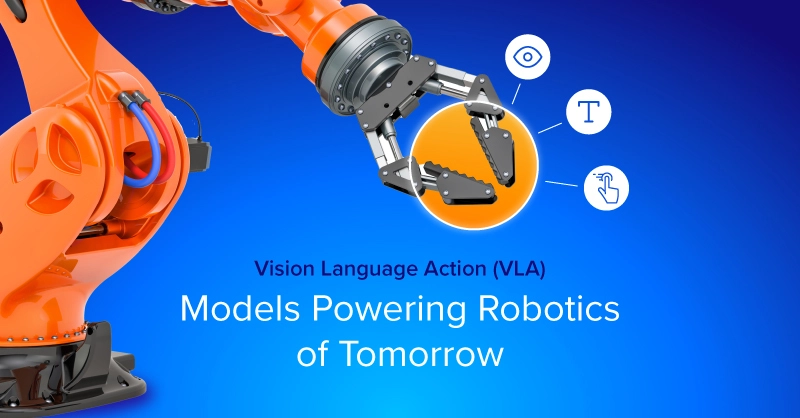
Introduction
Large language models are, as their name suggests, large. The most capable and accurate models now trend toward trillion-parameter architectures to achieve top performance on LLM benchmarks. However, these massive models require immense computational resources—often hundreds of GPUs—for training and deployment.
LLM distillation is an AI performance optimization methodology where a larger, trillion-parameter "teacher" model trains a smaller "student" model. This results in a more efficient AI model with much lower computational demands. With distillation, businesses can host their own efficient AI models for increased control, flexibility, and desired use cases.
What is LLM or Model Distillation?
Model distillation, also known as knowledge distillation or model compression, is a process where knowledge from a large, complex model is used to train a smaller, simpler model. This process allows the student model to learn and approximate the behavior of the larger teacher model for a certain task while requiring fewer computational resources.
The key components of model distillation include:
- The Teacher Model is often a large, pre-trained, or foundational model with high accuracy and performance in most LLM tasks.
- The Student Model is a smaller LLM that learns from the teacher model's outputs and internal representations. This can be used generally for all LLM tasks or for specific tasks.
- Training Process: The teacher model's outputs and probability distributions are used to train the smaller model.
During distillation, the teacher model provides detailed probability distributions of its predictions. These "soft targets" show how the model weighs different possible outcomes, helping the student model better understand the subtle relationships between different inputs, leading to more effective learning than simply copying final predictions.
Benefits of Model Distillation
The effectiveness of model distillation depends on various factors, including the architecture choices for both teacher and student models, the distillation method used, and the specific task requirements. But generally, training an LLM using knowledge distillation results in:
- Reduced Computational Requirements: Smaller models require less memory and processing power, making them more suitable for deployment on mobile devices, edge devices, or in resource-constrained environments.
- Faster Inference: Student models can process inputs more quickly due to their reduced size and complexity.
- Maintained Performance: When done properly, distilled models can retain much of the performance of their larger counterparts while being significantly more efficient.
- Task Specialization: Student models can be optimized for specific tasks (sentiment analysis) or domains (healthcare or law), potentially outperforming general-purpose models in these narrow applications.
A good example of distillation is the DeepSeek R1 model series, distilled from their 641-billion-parameter base model. DeepSeek R1 offers distilled versions using Qwen and Llama architectures, with sizes ranging from a mini 1.5 billion parameters to a moderate 32 billion parameters.
These distilled DeepSeek R1 variants have varying computational needs — from running efficiently on CPU-only systems (DeepSeek-R1-Distill-Qwen-1.5B) to requiring a multi-GPU workstation or server (DeepSeek-R1-Distil-Llama-70B). This is significantly more efficient than the base model, which needed hundreds of NVIDIA H800s (NVIDIA H100 designed for the Chinese market) for training.
Distillation vs Quantization
Distillation creates new and smaller models, whereas quantization still uses the full model, but with a lower precision floating point format. Both model distillation and quantization are small language model training techniques for condensing large language models.
Model Distillation
Model distillation creates a new, smaller model that learns from a larger model's behavior. This process:
- Creates a New Architecture: Results in a completely new, smaller model with fewer parameters
- Requires Training: Needs significant computational resources during the training phase
- Permanent Change: The resulting model is permanently smaller and optimized
- Flexibility: Can be customized for specific tasks or domains
Quantization
Quantization reduces model size by reducing the floating-point number precision. In other words, quantization modifies how numbers are represented within the existing model for better model efficiency. This process:
- Maintains Architecture: Keeps the same model architecture but uses lower precision numbers
- Minimal Processing: Requires relatively little computational power to implement
- Reversible: Can often be reversed to return to the original precision
- Universal Application: Applies uniformly across the model without task-specific optimization
There are different quantization methods to explore if you plan to perform your own quantization on an LLM.
Combining Both Approaches
Implement both techniques for a very small and performant model. The hybrid approach can result in extremely efficient models that maintain good performance while requiring minimal computational resources.
- First, Distillation: Create a smaller, task-specific model from the large teacher model
- Then, Quantization: Further reduce the model size through precision reduction
When implementing these techniques, carefully balance the trade-offs between model size, accuracy, and computational requirements. These smaller-sized models can struggle with out-of-scope tasks and may have limited capability to handle complex reasoning or nuanced understanding. While they excel in specialized domains, they might not match the original model’s versatility and broad knowledge base.
When to Use a Distilled AI Model
Distilled AI models are particularly well-suited for specific use cases and environments:
- Edge Computing: When deploying AI capabilities on edge devices for better computational resource optimization. These devices have limited computational resources, such as mobile phones, IoT devices, or embedded systems.
- Real-time Applications: In scenarios where quick response times are crucial, such as customer service chatbots or real-time translation services. These models can further be augmented with RAG techniques for pulling customer data.
- Cost-sensitive AI Deployments: When computational resources and infrastructure costs need to be minimized while maintaining acceptable performance.
- Specialized Tasks: Domain-specific tasks where a smaller, specialized model can match or exceed the performance of larger, general-purpose models.
However, distilled models may not be the best choice when:
- Broad Knowledge is Required: Applications requiring extensive general knowledge or complex reasoning across multiple domains.
- Accuracy is Critical: A predictable and accurate model is imperative in scenarios where even slightly lower performance is detrimental. For example, medical diagnosis and financial analysis need a high degree of accuracy.
- Task Flexibility Needed: When the application handles a wide variety of tasks or needs to adapt to new requirements frequently.
Organizations should carefully evaluate their specific requirements, resource constraints, and performance needs when deciding whether to implement distilled models in their data center.
Conclusion
Model distillation is an effective way to create smaller, more efficient models that can be deployed in resource-constrained environments while maintaining good performance on specific tasks. When combined with quantization techniques, it provides a powerful approach to making large language models more accessible and practical for real-world applications.
While these compressed models may sacrifice some versatility, they offer a valuable solution for organizations looking to implement AI capabilities without requiring extensive computational resources.
Deploy an appropriately sized open-source LLM model in your workflow to keep data local and skip cloud and API fees. Configure an Exxact GPU solution to run all your inferencing for better performance and a higher degree of security! Contact us for more information.
.png)
Fueling Innovation with an Exxact Multi-GPU Server
Training AI models on massive datasets can be accelerated exponentially with the right system. It's not just a high-performance computer, but a tool to propel and accelerate your research.
Configure Now
What is LLM Distillation vs Quantization
Introduction
Large language models are, as their name suggests, large. The most capable and accurate models now trend toward trillion-parameter architectures to achieve top performance on LLM benchmarks. However, these massive models require immense computational resources—often hundreds of GPUs—for training and deployment.
LLM distillation is an AI performance optimization methodology where a larger, trillion-parameter "teacher" model trains a smaller "student" model. This results in a more efficient AI model with much lower computational demands. With distillation, businesses can host their own efficient AI models for increased control, flexibility, and desired use cases.
What is LLM or Model Distillation?
Model distillation, also known as knowledge distillation or model compression, is a process where knowledge from a large, complex model is used to train a smaller, simpler model. This process allows the student model to learn and approximate the behavior of the larger teacher model for a certain task while requiring fewer computational resources.
The key components of model distillation include:
- The Teacher Model is often a large, pre-trained, or foundational model with high accuracy and performance in most LLM tasks.
- The Student Model is a smaller LLM that learns from the teacher model's outputs and internal representations. This can be used generally for all LLM tasks or for specific tasks.
- Training Process: The teacher model's outputs and probability distributions are used to train the smaller model.
During distillation, the teacher model provides detailed probability distributions of its predictions. These "soft targets" show how the model weighs different possible outcomes, helping the student model better understand the subtle relationships between different inputs, leading to more effective learning than simply copying final predictions.
Benefits of Model Distillation
The effectiveness of model distillation depends on various factors, including the architecture choices for both teacher and student models, the distillation method used, and the specific task requirements. But generally, training an LLM using knowledge distillation results in:
- Reduced Computational Requirements: Smaller models require less memory and processing power, making them more suitable for deployment on mobile devices, edge devices, or in resource-constrained environments.
- Faster Inference: Student models can process inputs more quickly due to their reduced size and complexity.
- Maintained Performance: When done properly, distilled models can retain much of the performance of their larger counterparts while being significantly more efficient.
- Task Specialization: Student models can be optimized for specific tasks (sentiment analysis) or domains (healthcare or law), potentially outperforming general-purpose models in these narrow applications.
A good example of distillation is the DeepSeek R1 model series, distilled from their 641-billion-parameter base model. DeepSeek R1 offers distilled versions using Qwen and Llama architectures, with sizes ranging from a mini 1.5 billion parameters to a moderate 32 billion parameters.
These distilled DeepSeek R1 variants have varying computational needs — from running efficiently on CPU-only systems (DeepSeek-R1-Distill-Qwen-1.5B) to requiring a multi-GPU workstation or server (DeepSeek-R1-Distil-Llama-70B). This is significantly more efficient than the base model, which needed hundreds of NVIDIA H800s (NVIDIA H100 designed for the Chinese market) for training.
Distillation vs Quantization
Distillation creates new and smaller models, whereas quantization still uses the full model, but with a lower precision floating point format. Both model distillation and quantization are small language model training techniques for condensing large language models.
Model Distillation
Model distillation creates a new, smaller model that learns from a larger model's behavior. This process:
- Creates a New Architecture: Results in a completely new, smaller model with fewer parameters
- Requires Training: Needs significant computational resources during the training phase
- Permanent Change: The resulting model is permanently smaller and optimized
- Flexibility: Can be customized for specific tasks or domains
Quantization
Quantization reduces model size by reducing the floating-point number precision. In other words, quantization modifies how numbers are represented within the existing model for better model efficiency. This process:
- Maintains Architecture: Keeps the same model architecture but uses lower precision numbers
- Minimal Processing: Requires relatively little computational power to implement
- Reversible: Can often be reversed to return to the original precision
- Universal Application: Applies uniformly across the model without task-specific optimization
There are different quantization methods to explore if you plan to perform your own quantization on an LLM.
Combining Both Approaches
Implement both techniques for a very small and performant model. The hybrid approach can result in extremely efficient models that maintain good performance while requiring minimal computational resources.
- First, Distillation: Create a smaller, task-specific model from the large teacher model
- Then, Quantization: Further reduce the model size through precision reduction
When implementing these techniques, carefully balance the trade-offs between model size, accuracy, and computational requirements. These smaller-sized models can struggle with out-of-scope tasks and may have limited capability to handle complex reasoning or nuanced understanding. While they excel in specialized domains, they might not match the original model’s versatility and broad knowledge base.
When to Use a Distilled AI Model
Distilled AI models are particularly well-suited for specific use cases and environments:
- Edge Computing: When deploying AI capabilities on edge devices for better computational resource optimization. These devices have limited computational resources, such as mobile phones, IoT devices, or embedded systems.
- Real-time Applications: In scenarios where quick response times are crucial, such as customer service chatbots or real-time translation services. These models can further be augmented with RAG techniques for pulling customer data.
- Cost-sensitive AI Deployments: When computational resources and infrastructure costs need to be minimized while maintaining acceptable performance.
- Specialized Tasks: Domain-specific tasks where a smaller, specialized model can match or exceed the performance of larger, general-purpose models.
However, distilled models may not be the best choice when:
- Broad Knowledge is Required: Applications requiring extensive general knowledge or complex reasoning across multiple domains.
- Accuracy is Critical: A predictable and accurate model is imperative in scenarios where even slightly lower performance is detrimental. For example, medical diagnosis and financial analysis need a high degree of accuracy.
- Task Flexibility Needed: When the application handles a wide variety of tasks or needs to adapt to new requirements frequently.
Organizations should carefully evaluate their specific requirements, resource constraints, and performance needs when deciding whether to implement distilled models in their data center.
Conclusion
Model distillation is an effective way to create smaller, more efficient models that can be deployed in resource-constrained environments while maintaining good performance on specific tasks. When combined with quantization techniques, it provides a powerful approach to making large language models more accessible and practical for real-world applications.
While these compressed models may sacrifice some versatility, they offer a valuable solution for organizations looking to implement AI capabilities without requiring extensive computational resources.
Deploy an appropriately sized open-source LLM model in your workflow to keep data local and skip cloud and API fees. Configure an Exxact GPU solution to run all your inferencing for better performance and a higher degree of security! Contact us for more information.
.png)
Fueling Innovation with an Exxact Multi-GPU Server
Training AI models on massive datasets can be accelerated exponentially with the right system. It's not just a high-performance computer, but a tool to propel and accelerate your research.
Configure Now



.jpg?format=webp)